Artist Geoff Gouveia’s creative and unique style stays true to his Southern California roots while also showcasing his undying passion for the beautiful game. In addition to sharing his art with the world, Gouveia aims to increase football culture in America, which has slowly been on the rise thanks to like-minded creatives across the nation.
When you think about art in soccer, what comes to mind? You might think about the logos, crests, or badges of clubs or national teams. You might think about statues outside of a stadium, or maybe some jersey designs. These are all aspects that specifically relate to art in its traditional definition. Conversely, you can find plenty of art on the pitch as well.
What some players are able to do can illicit comparisons to the artistic magic we find on the walls of museums in our finest cities. Masterpieces can be made both on a pitch or in a studio. And while they both have their own medium and tangible differences, they can also fuel and support each other.
Geoff Gouveia is a Riverside, California native who utilizes these artistic values of football as a source of inspiration for his artwork. With his signature bending and twisting limbs, and characters that seem suspended in perpetual movement, Gouveia has found a way to take the energy of the game and fuse it into his artistic output. Whether it’s murals in LA or custom-designed kits in Toronto, Gouveia is taking his talents all over the world and spreading his love for the game and its culture along the way.
When I first interviewed Gouveia I caught him while he was preparing for a solo show in his hometown of Riverside. It was a pop-up event that featured his artwork on all different types of clothes, from t-shirts to jean jackets. The set was entitled “Paul’s Woes”, and was all based on specific stories from the Bible, specifically relating to Paul the Apostle.
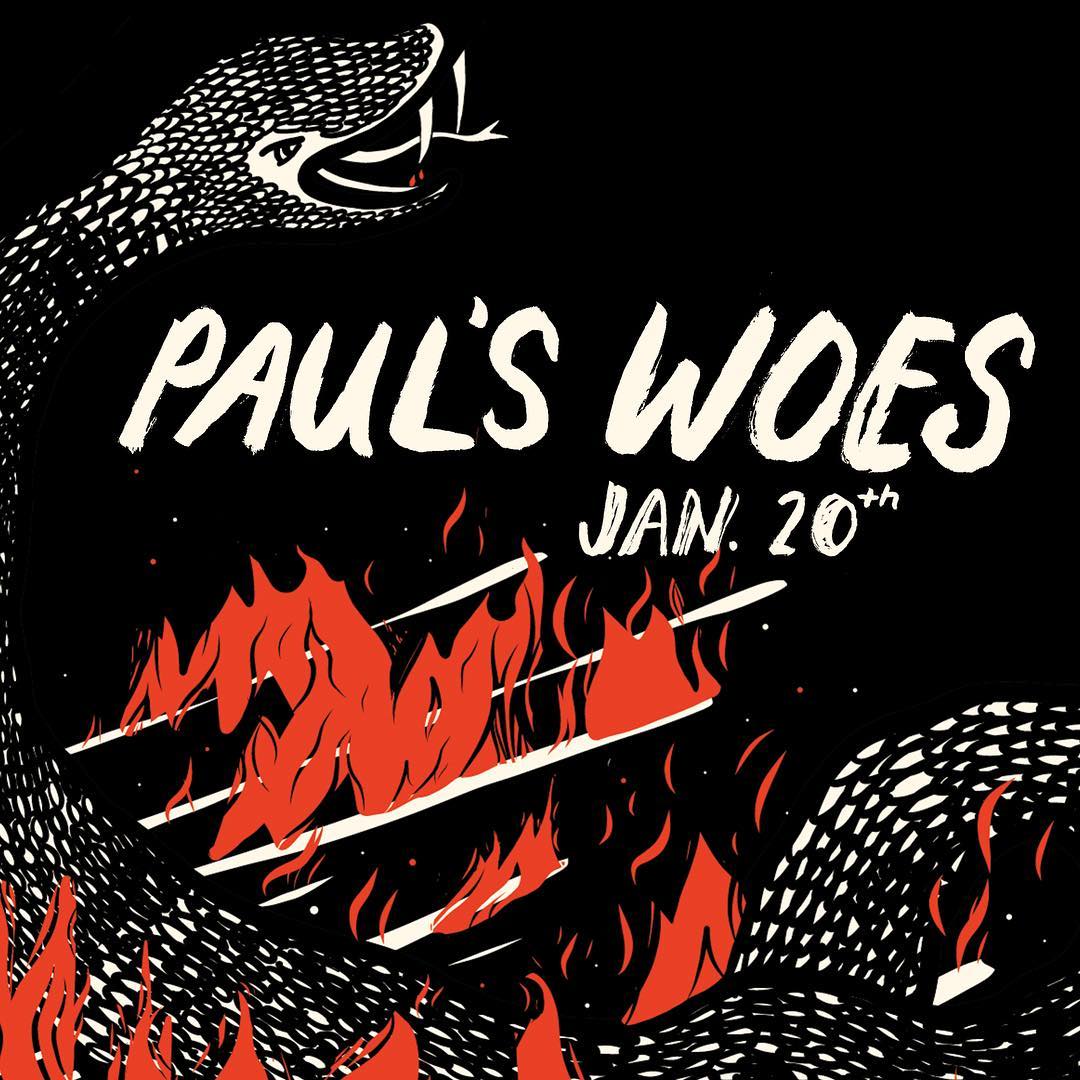
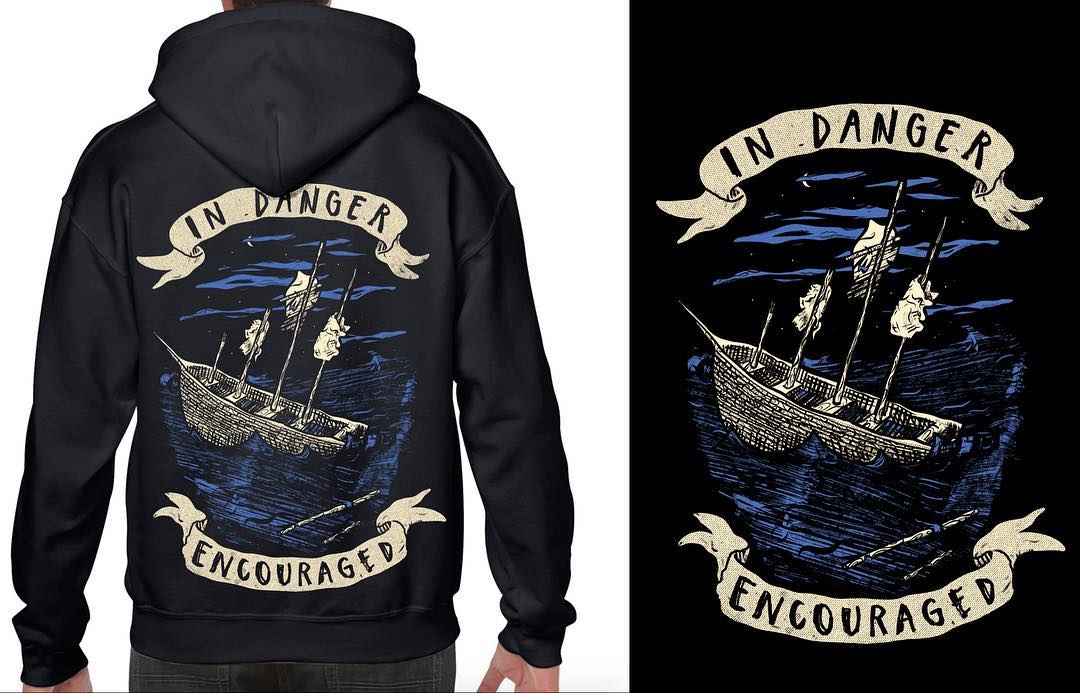
Lately, he hasn’t been doing much work in Riverside because he has found an avenue for his art that has taken him all over the world. Just last week, he was in Toronto working on a custom kit collection with INARIA. This avenue for Gouveia is led and fueled by his love for football.
“My focus is working with soccer-related brands and soccer-related imagery,” Gouveia says.
So far that has involved LAFC, MLS, Live Breathe Futbol, multiple projects with Adidas, and recently INARIA Apparel.
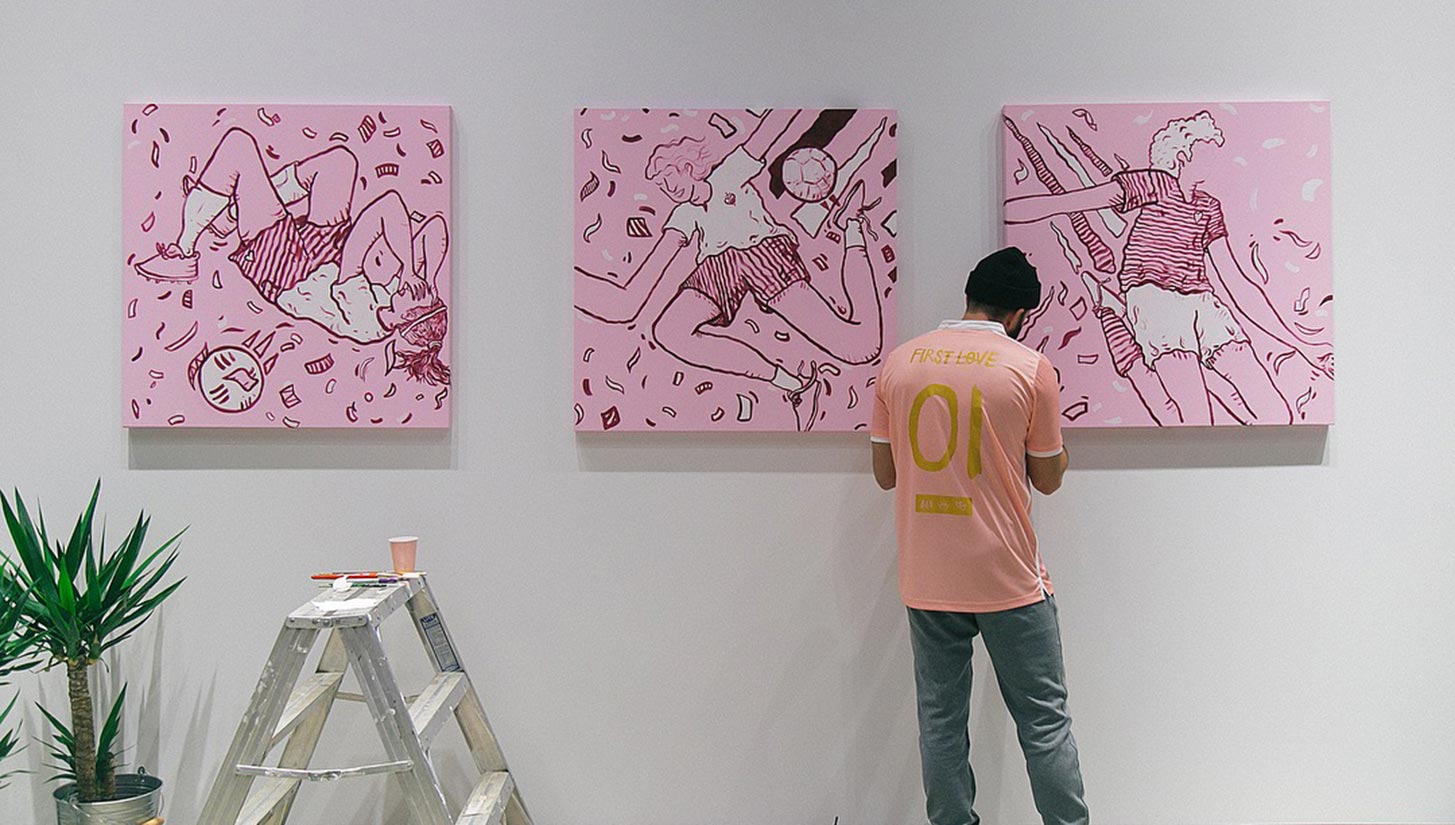
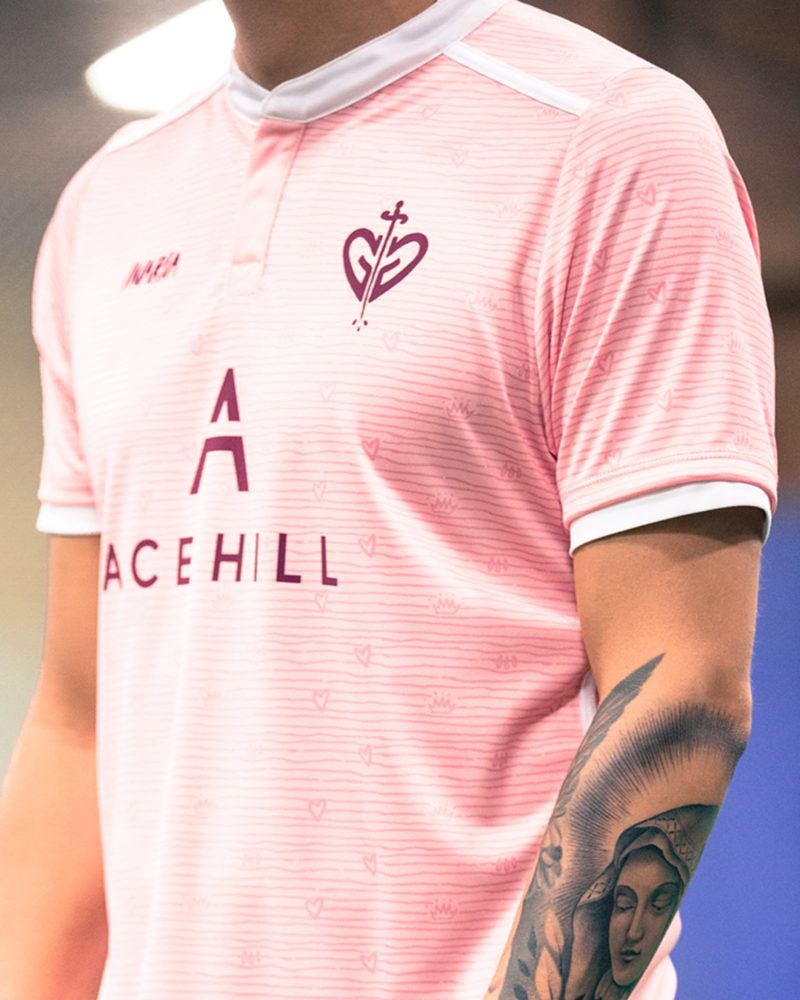
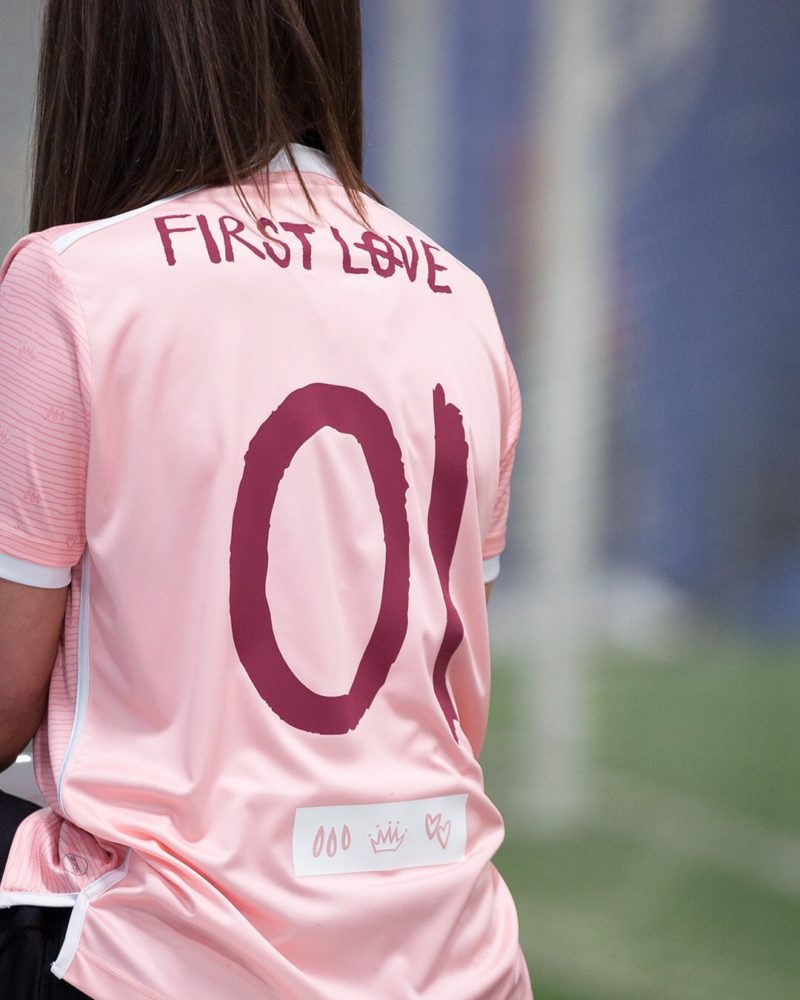
Growing up, Gouveia was introduced to the game through his older brother.
“My older brother loved the sport,” Gouveia said. “He played striker, so the only option for me was to play keeper. I grew up on the defense side getting pummeled by my older brother. It taught me how to take a punch.”
The toughness that the game warranted for a younger player jostling with older kids didn’t turn him off of the game though, and over time he found himself drawn to the sport for different reasons.
On a trip to South America he discovered just how international football was and what it meant to be able to play the game in different places.
“I wasn’t great at football but I liked the community aspect,” Gouveia said. “It wasn’t until I went to Chile in 2008 that I noticed that. My Spanish at the time wasn’t great, but when they saw that I could somewhat hold my own on the pitch I got a certain amount of respect. They weren’t expecting an American to be able to dribble a ball and be able to open up into space and really understand the game. It gave me clout within that community. Although I grew up playing it I really fell in love with soccer around that time. And this is around the same time when I started creating art. The art coincided with travel and me coming of age as a man.”
While playing the game overseas gave Gouveia a different perspective on what the game could do for him, he was still figuring out what he wanted to do for himself. He first went to school to study theology but after a year switched over to art. After committing to the craft he’s been developing a style and working on large-scale projects. His subject matter has started to drift more and more to football as more space has opened up there financially. Gouveia is confident that there is opportunity at the intersection of the art and football worlds and he’s exploring it as much as he can.
Growing up in California, Gouveia was heavily exposed to the surf and skating community. He grew up playing soccer and skating, and always held an affinity for the graphic nature of skate decks, including classic brands like Quicksilver, Hurley, and Toy Machine. Gouveia has taken inspiration from these brands into his style, except he focuses on football-related designs rather than skating.
“I realized there was a void in the soccer community,” Gouveia said. “I’ve noticed that a lot of the art is geared toward the Premier League or player-specific imagery but it’s not about the culture. If you look at skateboarding art as a whole, it doesn’t reference the skater. The decks were always just about the culture. The art created within the soccer community now is such an echo chamber, like, ‘Oh, here’s Messi, here’s Ronaldo, here’s Ozil, here’s Manchester United.’ It’s all the same thing. The majority of the world isn’t Manchester United — it’s guys like me who play in a Sunday league. Who love the sport and love the culture of it. And, yeah, we hold on to what the pros are doing but at the same time, I’m way more excited when I meg my friend than when Pogba does some amazing skill on the pitch. I feel like I’m the hero and I feel like that’s what the culture loves about soccer and so I wanted to showcase that within the work.”
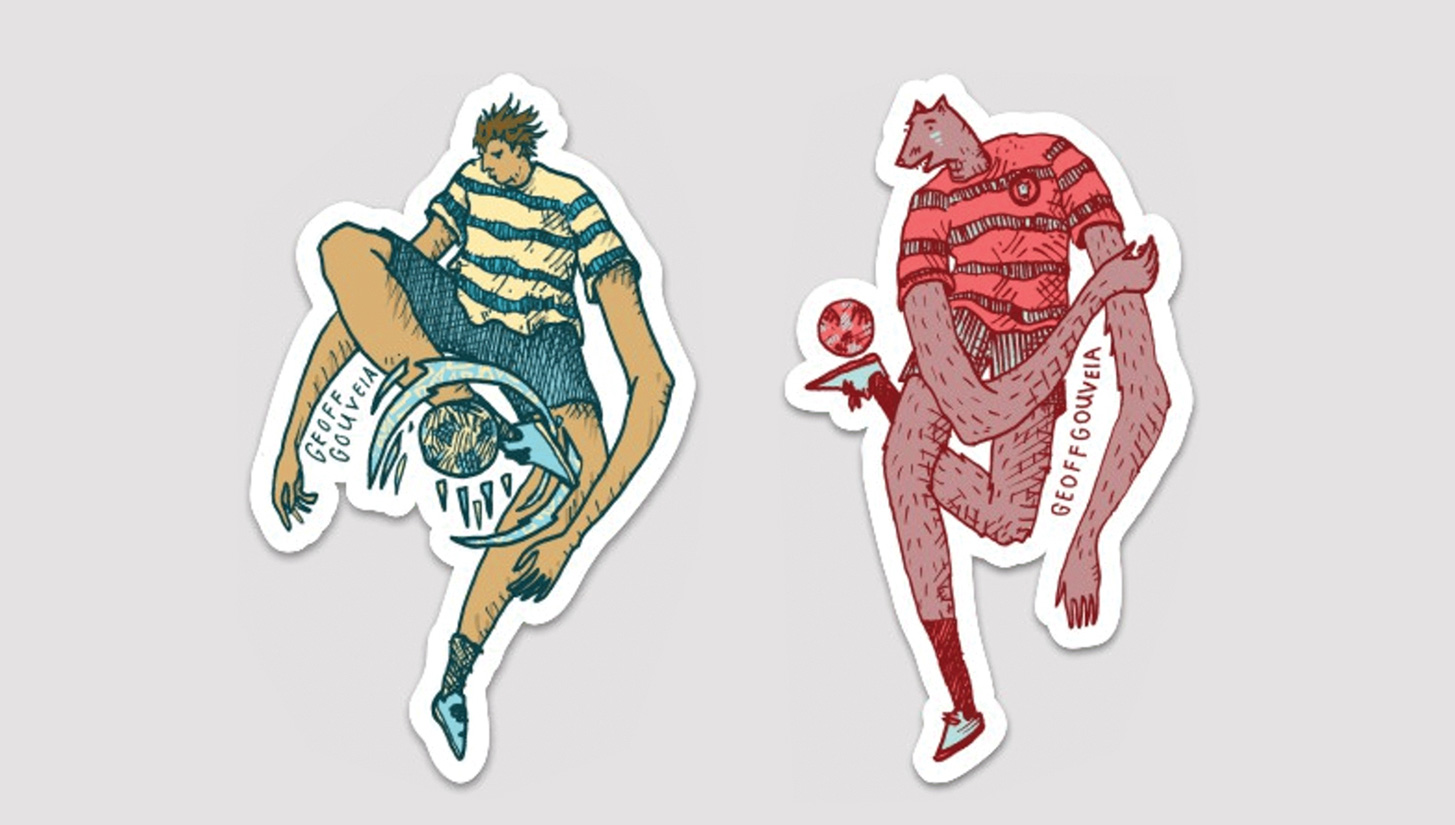

Gouveia’s artistic style is one that likes to champion the movement and flow of playing. It’s a style that has developed from specific childhood interests but over time has morphed into his own unique expression. The elongated and elastic limbs on his characters comment on how the game is constantly in motion and never static.
This distinct style harkens back to Gouveia’s affinity for childhood literature, specifically Shel Silverstein, Maurice Sendak, and Quentin Blake, who did the art for Roald Dahl, but it pushes their formula forward with the influence of football.
“If you look at art history a lot of old masters were infatuated with painting dance,” Gouveia said. “I believe dance was a good way to show motion. For me, when I’m drawing soccer, I feel like that’s the modern version of that.”
Connecting his artwork to what the old masters were doing is both humble recognition of the past and a lofty aspiration for the future. In order to do this successfully Gouveia will have to lean on the game once again to provide guidance on how to get where he would like to go. Surprisingly, there are many similarities between being on the pitch and being in front of a blank canvas.
“When I’m on the field things are intuitive,” says Gouveia. Like when someone’s opening up and making a run, if you see the pass and it’s perfect — it’s already too late. Someone else is already going to see it. You have to see it before it’s perfect. That’s so much of what painting is.”
In 2018, Gouveia wants to put his name out there in the football world and spread his creativity and the style that he’s developed to help further the game and the culture. Whether that’s in the form of murals, jersey design, painting, or sketching, if it’s within the realm of something connected to football, he wants to be involved.
“If you touch soccer I need to collaborate with you,” he says. “It’s really that binary.”
But as positive and successful as his journey has been up to this point, it hasn’t always been easy and it has come with a few bumps in the road. Gouveia was commissioned by LAFC to make a mural outside of their stadium, where he ran into some adversity. He painted two murals throughout 2017, both of which were defaced shortly after their completion.
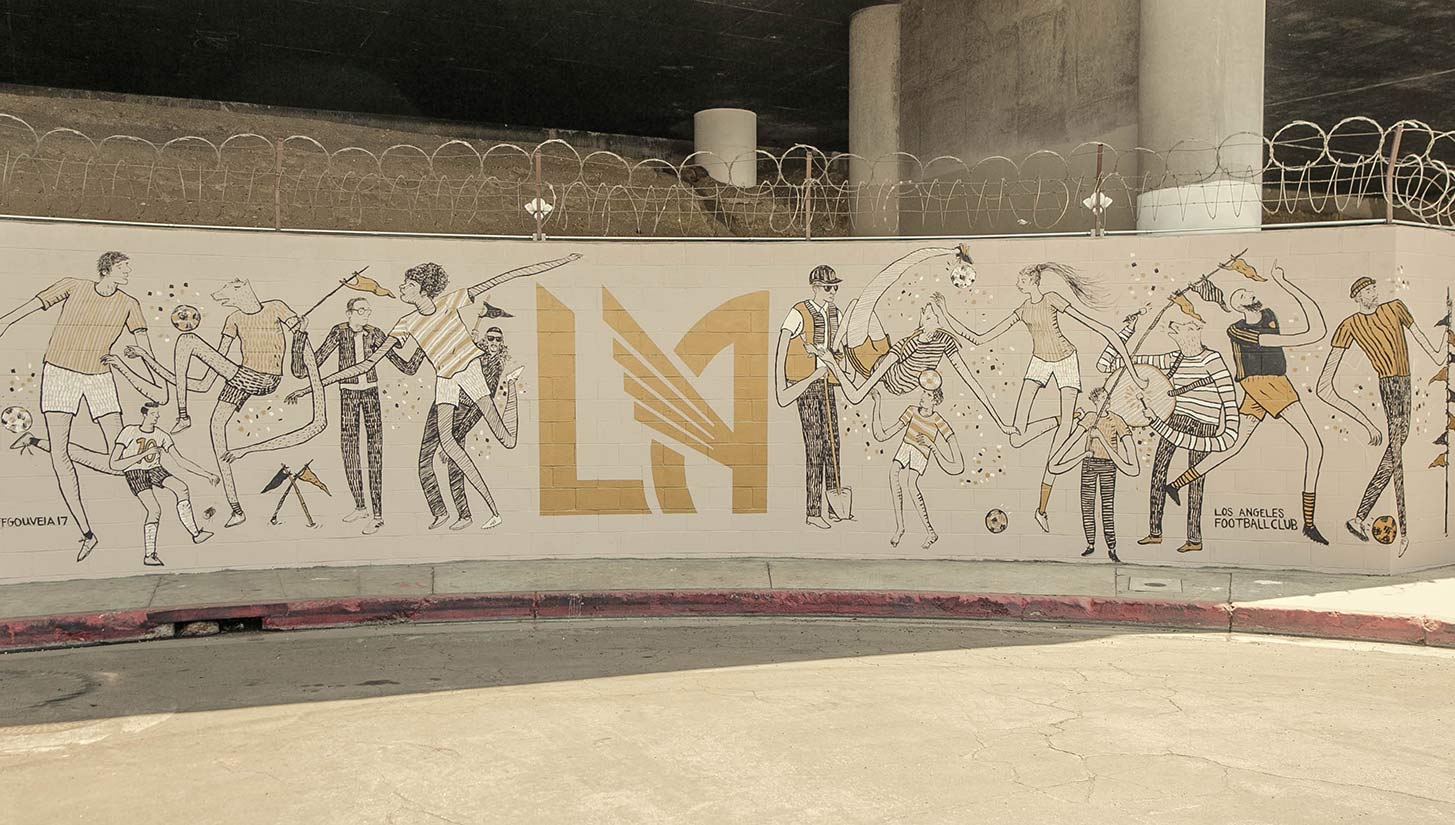
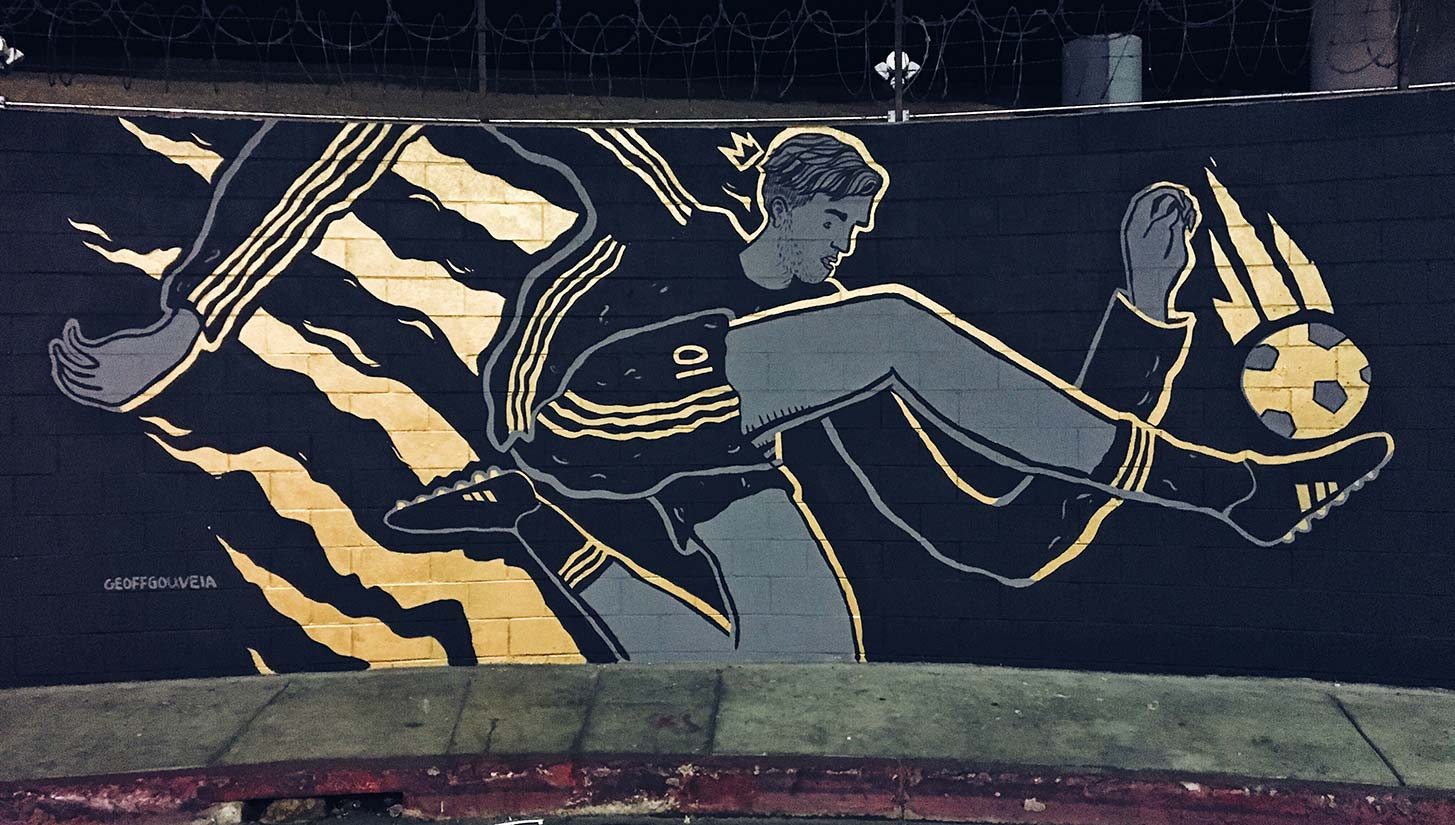
The murals featured the letters of the club and a number of his signature players bending and weaving in motion over a large wall. The people who sprayed over it took the “LA” from “LAFC” and turned it into a big block-letter spelling of “GA-LA-XY,” which deliberately covered over the rest of the images. What was a mural championing the beautiful movement of the game and how wonderful it is to have a new team playing professional soccer here in LA was now a reminder that there already was a pro squad in LA. . . they’re called the Galaxy. They once had David Beckham, if you didn’t know.

While it’s incredibly frustrating for an artist to put so much time and effort into their work only to have it tarnished by anonymous vandals who specialize in super basic block letters, Gouveia approaches the issue with the cool worldly perspective you would expect him to. At least he knows who did it, not down to any exact names and addresses, but he knows what they represent.
“It was Galaxy supporters,” Gouveia said. “The guys at LAFC said they were working with the LAPD on it. I don’t think that anyone will be caught. I don’t know who’s going to come forward. That stuff is a bummer but also it’s indicative that people care. This is serious stuff that they would be willing to target my work and spin me that way. It makes me like LAFC a whole lot more than the Galaxy, I’ll tell you that much.”
Gouveia admitted he never sought out to be specifically an LAFC supporter but this experience has definitely turned him off of the Galaxy.
“I always viewed the Galaxy as kind of like Disney,” he says. “I’m not down for them. I’m super down for LAFC and the edge that they bring. It’s gonna be a fun rivalry.”
There have been few examples, if any, of passionate support from MLS fans that has felt anywhere close to the rowdiness the international game is known to contain. New York has had some brouhahas with its derby between NYCFC and the Red Bulls, but aside from drunk fans having recently watched Green Street Hooligans, this might be the single greatest crime in its history. American soccer crowds and the die-hards, or “ultras,” of the MLS clubs are not exactly known for being scary or intimidating. They’re barely registering on the scale where even using the word ultra is appropriate.
“That’s more associated with Russian hooliganism as opposed to MLS Disney supporters,” Gouveia said. “To me it only boosts my identity as a LAFC supporter. Galaxy supporters won’t like my work because I’m going to be known as the LAFC guy. Just by choosing Adidas, Nike’s not going to come knocking on my door.”
Lines are being drawn in the sand and rivalries are slowly starting to emerge amidst the controversy of the defaced murals. But in a weird way this conflict is an exciting thing to fans of the game. Caring is what makes the culture so lively. Loving one player and hating another is part of the emotions the game draws out.
For Gouveia, what started out as yet another way to spread his influence among soccer culture in America has turned into an “us-against-them” saga that nobody, including him, saw coming at the inception of this project. However, rivalries are a good thing for the sport. Even if it’s at his artwork’s expense, Geoff is not that mad at it.
“Having more rivalries makes it so it really doesn’t matter where you are in the standings,” Gouveia said. “I’ll always be stoked that when the Galaxy and LAFC play it’s going to be a little more cheeky. It’s going to be a little more at stake even if they’re both vying for the bottom rung — it really won’t matter.”
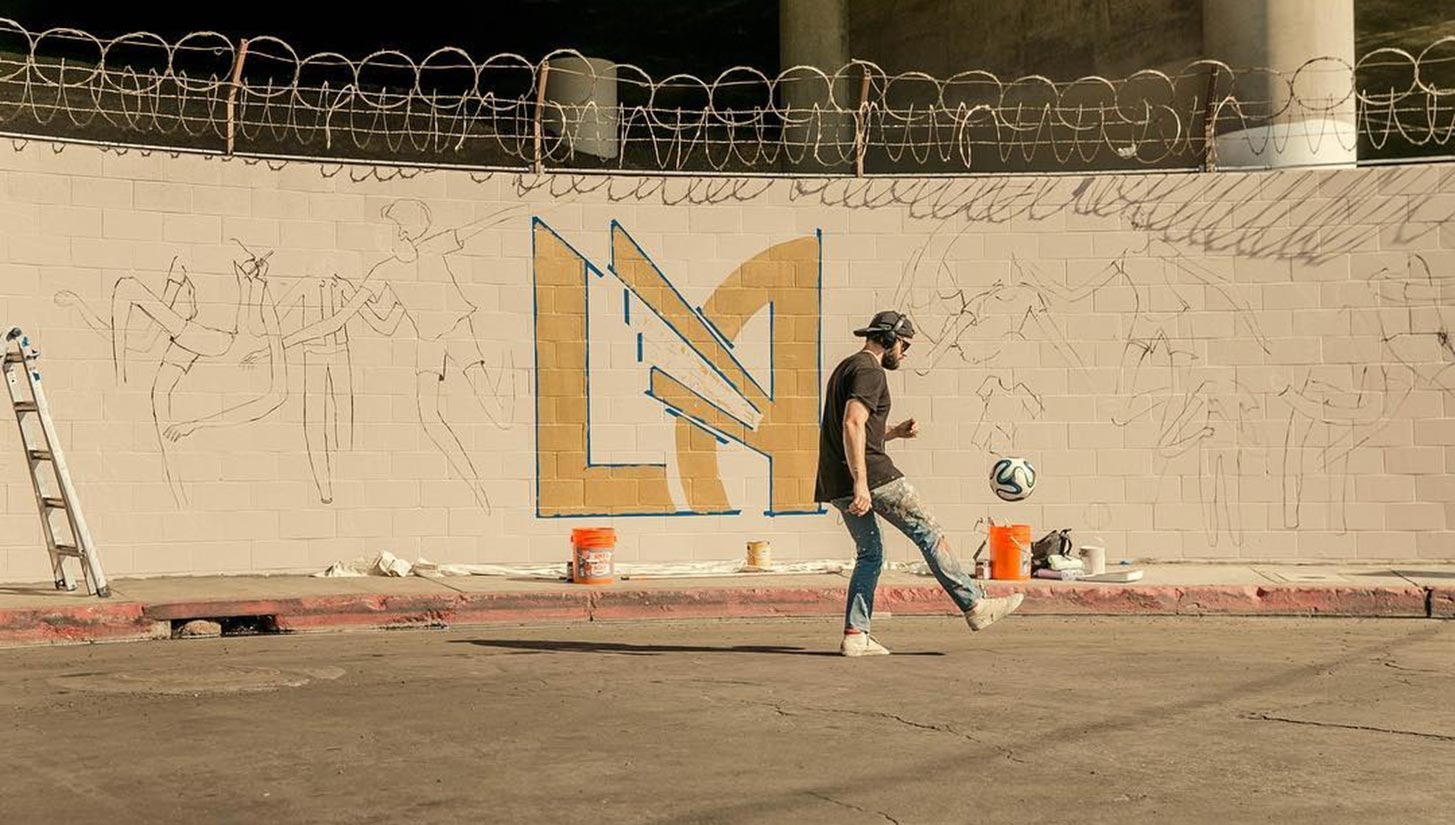
The emerging rivalry seems like it will ultimately be one fueled by the conflict between the white collar and blue collar worker. It’s the start-up company versus the established corporation. The gutters of the streets versus the top-floor office suites. A lot of the best sports rivalries are ones driven by conflicts that are more significant than merely one team versus another.
There are many examples of rivalries fueled by the tensions behind religious divides, or competition between cities and nations, or even public versus private schools that can make for great clashes. These underlying storylines help drive the existing battles between teams and allows the players on the field a chance to play for ideas that surpass anything their team alone could stand for.
Being stuck in the middle of this emerging conflict is something that Gouveia doesn’t mind at the moment. While he is aware that die-hard Galaxy supporters might find themselves not liking his work merely from association, he’s happy that passions exist in this country that would cause someone to feel that way. After all, caring is a good thing. That’s what the international game has in spades and it’s something we hope to garner here in the U.S.
Gouveia pointed out that while the U.S. has had its struggles at the top level of soccer, most notably its national team, that doesn’t mean soccer isn’t thriving in the country. Grassroots teams and collectives like Providence City FC, Guerrilla FC those in Portland’s Toffee League are on the rise, and one thing they all have in common is that they are fun and operated by die-hard soccer fanatics, not money-driven corporate suits. In this sense, the American game is starting to become more similar the international one.
It was this international appeal of the game that really converted Gouveia from a casual fan to more of a fanatic. With it will come far more fervor and intensity than what we’ve seen so far in this country. And where one mural gets taken down, another gets put up. As Gouveia learned in the backyard playing with his older brother, the game isn’t always soft and cushy — it can be brutal at times and it can hurt.
Gouveia’s momentum has not slowed down since his LAFC mural was tagged twice, and he continues to push for more opportunities for his art and soccer to combine.
“I think soccer is cool, that’s why I want to be a part of it,” says Gouveia. “I really love the culture. I love connecting with people who do like-minded things and I just want to be a part of it. I don’t think that I have to add anything, I just want to be a small part of that big pie. If my work is cool, it’s just because it’s a byproduct of being created by soccer.”
The game inspires so much in us when we watch that we want to somehow replicate that magic ourselves. Not only does it inspire kids to train hard so they can one day have their shot at glory on the field, but it has similar effects to all different types of people. The athlete might be drawn to success on the pitch, while the mathematician is drawn to the statistics, but at the same time the artistic mind can take away plenty of inspiration from the game in a multitude of ways. Whether it’s the smoothness of a specific player or the overall flow and rhythm of the game, there’s something for everybody. Gouveia is one of those artists who has let the beautiful game’s inspiration take him to places he never dreamed before. We can’t wait to see where it goes from here.
So, what do you think about when you think about art in soccer?
For more on Geoff, make sure to give him a follow on Instagram.



















[…] we are joined by LA artist Geoff Gouveia. Geoff was the guy who created the famous LAFC mural that got buffed by LA Galaxy fans. Geoff is doing a lot of great work in soccer and came by to talk about it. We also discuss the […]